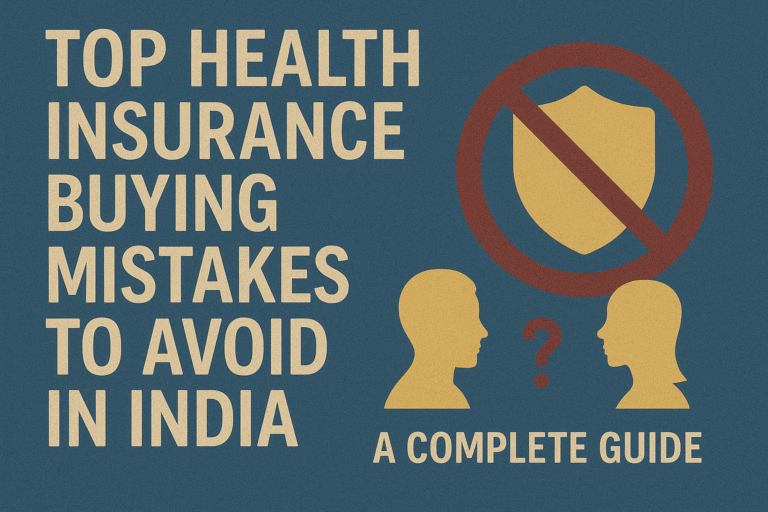Common Mistakes to Avoid When Buying Health Insurance in India
Purchasing health insurance is a critical financial decision that can safeguard you and your family against rising medical costs. In a country like India, where healthcare inflation is steadily increasing, having an adequate health insurance policy has never been more important. However, many individuals unknowingly make mistakes during the buying process, leading to insufficient coverage and unexpected financial burdens.
This article highlights the common mistakes to avoid when buying health insurance in India, helping you make a more informed and beneficial decision.
Insufficient Coverage: A Costly Oversight
One of the biggest mistakes buyers make is opting for a health insurance plan with inadequate coverage. Many individuals underestimate future medical expenses or choose a lower sum insured to save on premiums. However, with the cost of hospitalization, surgeries, and critical illness treatments rising rapidly, a basic policy might not be enough.
Tip: Evaluate your family’s healthcare needs, consider medical inflation, and choose a coverage amount that provides comprehensive protection for both planned and unforeseen medical events.
Failure to Disclose Pre-Existing Conditions
Transparency is key when buying health insurance. Not disclosing pre-existing illnesses—whether intentional or accidental—can result in claim rejections later. Insurance companies perform rigorous checks, and undisclosed information may lead to policy cancellation or denial of claims.
Tip: Always declare your complete medical history honestly. Opt for policies that cover pre-existing diseases after a stipulated waiting period, ensuring long-term financial security.
Ignoring the Fine Print: Policy Terms and Conditions
A common oversight is neglecting to read the policy documents thoroughly. Buyers often overlook crucial details like coverage exclusions, waiting periods, room rent limits, and co-payment clauses, only to face surprises at the time of claim settlement.
Tip: Carefully review the terms and conditions. Pay special attention to sub-limits, claim procedures, exclusions, and renewal terms. Clarify any doubts before finalizing the policy.
Not Comparing Health Insurance Plans
The market is flooded with a variety of health insurance products, each offering different benefits. Failing to compare policies can mean missing out on better coverage options, competitive premiums, or additional benefits like maternity cover or wellness programs.
Tip: Use insurance comparison portals or consult an advisor to analyze policies based on key factors—coverage, premium costs, network hospitals, claim settlement ratio, and customer reviews.
Choosing a Plan Based Solely on Low Premiums
While affordability is important, choosing the cheapest policy could lead to compromised coverage. Low-premium plans may have high deductibles, longer waiting periods, limited network hospitals, or restrictive sub-limits that can impact the claim amount.
Look for a balance between a reasonable premium and comprehensive features to ensure adequate healthcare protection.
Overlooking Network Hospitals
Network hospitals facilitate cashless treatment, reducing the financial and procedural stress during emergencies. Ignoring the network hospital list can leave you without access to cashless facilities at preferred or nearby hospitals.
Tip: Check if your preferred hospitals are part of the insurer’s network. A wider hospital network ensures greater convenience during medical emergencies and smoother claim processes.
Ignoring Waiting Periods
Every health insurance plan has waiting periods for certain illnesses and pre-existing conditions, typically ranging from 2 to 4 years. Not understanding these waiting periods can result in denied claims when you need medical care the most.
Tip: Choose plans with shorter waiting periods for essential treatments and ensure you are aware of all waiting clauses before purchasing the policy.
Conclusion
Avoiding common mistakes like insufficient coverage, non-disclosure of health conditions, neglecting policy terms, and not checking network hospitals can lead to better decision-making and comprehensive financial protection. Taking a few extra steps today ensures that you and your family are shielded against unforeseen medical costs tomorrow.



